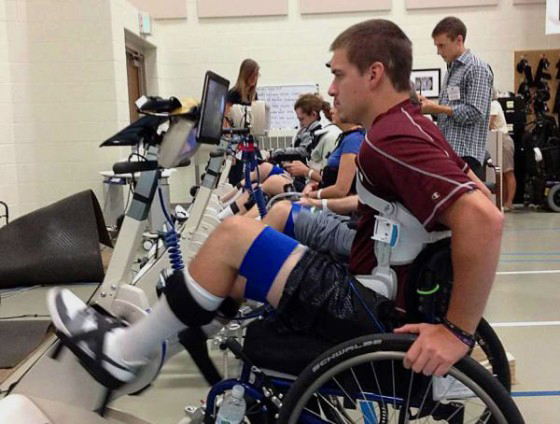Related posts: Admissibility of Legal Videos
Day in the life videos are typically presented in court to demonstrate for jurors the severity of a plaintiff’s injuries and the impact those injuries have on the plaintiff’s daily living activities. These activities, such as rising, eating, bathing, and going to work or therapy, can vividly demonstrate the plaintiff’s dependency, limitations, frustrations, and even the plaintiff’s life-long dreams. Day in the life videos are intended to bring jurors inside the plaintiff’s life in a way that is virtually impossible to communicate with mere words.1 Day in the life videos also circumvent the impracticality of having jurors visit the plaintiff for an entire day to eyewitness the plaintiff’s injuries and challenges themselves. Consequently, day-in-the-life video presentations are a powerful tool of demonstrative evidence for personal injury cases, but can you get them in?
Although day in the life videos are considered similar to in-court demonstrations of injuries, their admissibility is subject to broad, although not absolute, judicial discretion.2 These ‘daily activities’ videos are used to show the impact of a plaintiff’s injuries on their daily activities. However the proponent of the video must still provide the appropriate foundation for its admissibility. When determining the admissibility of day in the life videos, most courts allow the admission of such day in the life videos provided that; 1) their probative value outweighs any prejudice to the defendant and 2) there are no demonstrated improprieties in the videos content or production techniques.3
Assuming plaintiff’s counsel provides the proper foundation and authentication for the above referenced points, the video will likely be admissible. In Cisarik v Palos Community Hospital,4 a two-pronged test was used to determine admissibility. The first prong required the party proffering the video as evidence must show that the videotape is an accurate portrayal of what the events it depicts. The foundation must be laid by someone having personal knowledge of the videotape and its contents and be available for in-court cross-examination., typically the plaintiff or the person most knowledgeable for the legal video production company. The second prong requires that the video’s probative value cannot be substantially outweighed by its prejudicial impact.5
In Grimes v. Employers Mutual Liability Ins. Co. of Wisconsin,6 the court similarly noted that day in the life videos are generally admissible, if authenticated and relevant.7 The Grimes court concluded that, although the scenes depicted were unpleasant, the plaintiff was able to show that the daily activities in the video were typical for the plaintiff, and thus the admission of the video was not unduly prejudicial.8
Likewise in Bannister v. Town of Noble, Oklahoma,9 the court noted that in order to be representational, day in the life videos must have a foundation of accuracy and fairness10 The Barrister court addresses the issue of “unringing the bell” by requiring the trial court judge to examine the video in camera and determine, on a case-by-case basis, whether the probative value of the particular videotape outweighs the possibility of prejudice.11
In short, day in the life videos should be admissible as long as they do not contain, inter alia, artistic highlighting, including music and some narration, obvious exaggerations, self-serving behavior, scenes which serve little purpose other than to create sympathy or contain other unduly inflammatory material.
In summary, a day in the life video is not only persuasive, but in most cases admissible, so long as it is prepared by an experience legal video production company who understands the common admissibility requirements of the jurisdiction where your client’s case is being tried. The key to this success is an open dialogue wherein the commissioning attorney discusses these requirements with the legal video production team, who uses their expertise to execute a high- quality and admissible product.
ENDNOTES
Article is not meant to be an exhaustive review of every federal and state case regarding day-in-the-life videos.
- M. Dombroff, Dombroff on Demonstrative Evidence § § 124-51 (1983 & Supp. 1990) (videotape depositions and day in the life presentations)
- McCormick on Evidence §214 19 (4th Ed.)
- See generally Ellingwood v. Stevens, 564 So.2d 932, 936 (Ala. 1990); Burke v. 12 Rothschild’s Liquor Mart, Inc., 593 N.E.2d 80, 84 (App. Ill. 1992); Protective Casualty Ins. Co. v. Killane, 447 So. 2d 316 (Fla Ct. App. 1984).
- Cisarik v. Palos Community Hospital, 144 Ill.2d 339, 341, 579 N.E.2d 873 (1991).
- See Hahn v. Tri-Line Farmers Co-op, 579 N.E.2d 874 (Minn.Ct.App.1991)
- Grimes v. Employers Mut. Liab. Ins. Co., 73 F.R.D. 607
- See Graham & Lapp, supra 73 F.R.D. 607 (D. Alaska 1977)
- Id. at 610.
- Bannister v. Town of Noble, Oklahoma, 812 F.2d 1265, 1270 (10th Cir. 1987)
- Id. at 1209 quoting Sanchez v. Denver & Rio Grande W. R.R. Co., 538 F.2d 304, 306 n. 1 (10th Cir.1976) cert. denied, 429 U.S. 1042, 97 S.Ct. 742, 50 L.Ed.2d 754 (1977)
- 11. Id. at 1270

